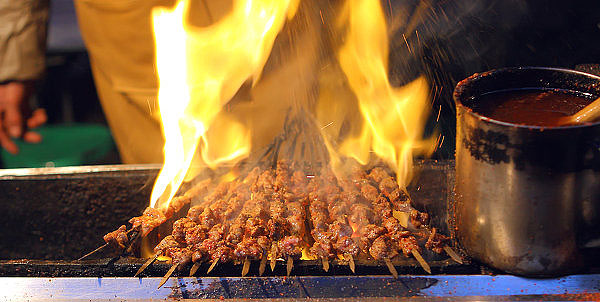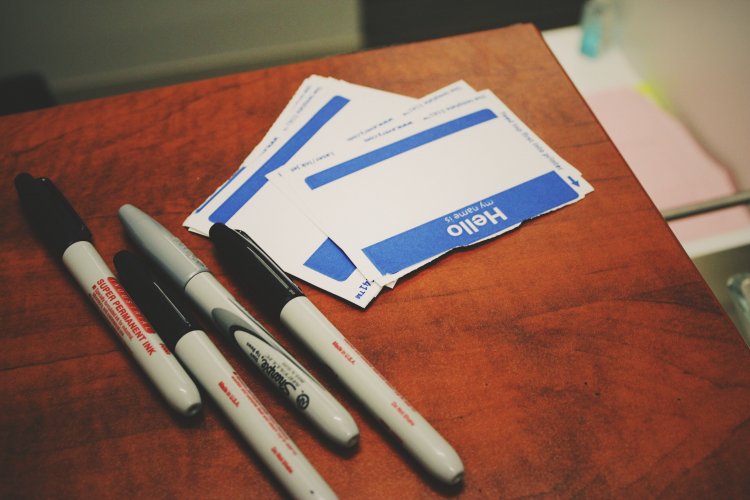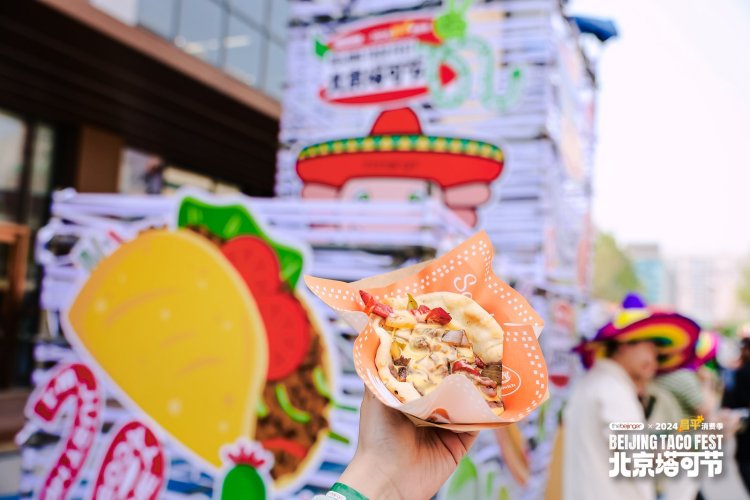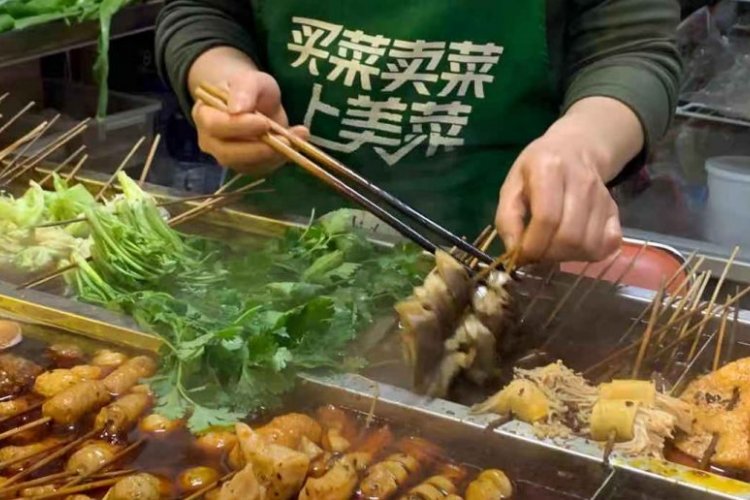Mandarin Monday: Chuan, Chuanr, Chuan'r, Chuan'er? How to Correctly Transliterate Beijing's Favorite Street Snack
Everybody eats it, and nobody seems to know how to spell it: The ubiquitous and delicious bits of lamb or other animal bits pressed on a stick and fired over a charcoal grill. You know it as 串儿 or, possibly, chuan’er, or chuanr, or chuan’r …
A few weeks back, I received a terse message from an old friend, former long-time Beijing resident and literary translation stalwart Brendan O’Kane. Currently in Philadelphia serving time as a doctoral student at the University of Pennsylvania, Brendan took umbrage with my transliteration in a recent blogpost of the Beijing meat-based delicacy as “chuan’r." One 'r'. One apostrophe.
“Seriously, what the f*%k is with people writing “chuan’r” when the 兒 is nonsyllabic? There are RULES, you know! People at The Beijinger having been doing this for years – is it some kind of contagious brain parasite?”
In the interest of getting this right, we asked several experts from the field of Chinese language and linguistics – including Brendan – to help us settle the debate.
“For er-ized syllables, the ‘-r’ attaches directly to the last letter of the syllable it modifies: 点儿 dianr, 口儿 kour, etc," says O'Kane. "An apostrophe in pinyin indicates a syllabic break in cases where it might otherwise be ambiguous as in 西安 Xi’an, 天安门 Tian’anmen.”
Zhao Ning, who has taught Chinese to international students for over a decade and is currently the Director of the IES Abroad Program at Beijing Foreign Studies University concurs.
“Words like 串儿 or 京味儿 are written as chuanr and jingweir respectively because the “er” is not considered a separate syllable."
Ilya Cheremnikh, founder and director of the private language center Culture Yard, polled his team and the consensus from the Yard confirmed the apostrophe-less chuanr.
“Usually 儿 followed by a noun is a way of making something small or a little bit cute. As in flower 花儿 huar.”
David Moser, Academic Director at the CET program in Beijing and the author of A Billion Voices: China's Search for a Common Language, argues that, "Writing it as chuan'er risks giving the impression that the word is by-syllabic, like chuan-ER. Probably English speakers or those used to most Western orthographies balk at an 'r' stuck next to a consonant but that's just the way it is."
Not everyone was in complete agreement. Eric Abrahamsen, of the Chinese Literature in Translation collective, Paper Republic, offers a vote of dissent.
“I’m plumping for chuan’r,” says Abrahamsen. “It's a nice middle ground between chuan’er which is clearly too much, and chuanr, which just seems wrong.”
And so, perhaps, the debate will continue. Adds David Moser, “There are controversies here and three, and there will be those who will dispute these principles. They’re entitled to their o-pinyin.”
More stories by this author here.
Jeremiah Jenne is a writer, educator, and historian based in Beijing since 2002. Jeremiah also leads public walks and programs at Beijing by Foot.
Image: travelwireasia.com
Related stories :
Comments
New comments are displayed first.Comments
![]() admin
Submitted by Guest on Tue, 02/28/2017 - 08:55 Permalink
admin
Submitted by Guest on Tue, 02/28/2017 - 08:55 Permalink
Re: Mandarin Monday: Chuan, Chuanr, Chuan'r, Chuan'er? How to...
Move to Taiwan and call it chuan
![]() goblet
Submitted by Guest on Mon, 02/27/2017 - 20:44 Permalink
goblet
Submitted by Guest on Mon, 02/27/2017 - 20:44 Permalink
Re: Mandarin Monday: When a Chuanr is Chuan'r is a Chuan'er,...
Apostrophes being used to avoid ambiguity in pinyin is a common misonception, according to pinyin.info.
Awesome. Thanks!
Validate your mobile phone number to post comments.







